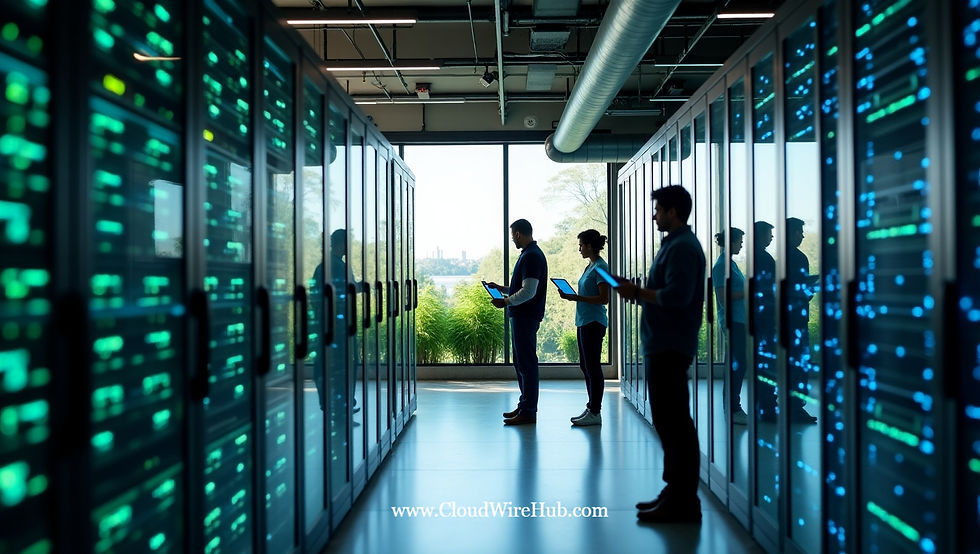Energy-Efficient Data Centers and the Future of Cloud in 2025
- Dhruv Patel
- Feb 10
- 2 min read
As cloud computing continues to grow, the demand for sustainable and energy-efficient data centers has never been higher. In 2025, hyperscale cloud providers and enterprises are prioritizing green technologies, AI-driven optimizations, and renewable energy to reduce the environmental impact of data centers while improving performance and cost-efficiency.

The Need for Energy-Efficient Data Centers
Cloud computing accounts for nearly 1% of global electricity consumption—a number expected to rise.
Governments and organizations are enforcing stricter carbon emission regulations for data centers.
Businesses are shifting to eco-friendly cloud solutions to align with corporate sustainability goals.
Key Trends in Energy-Efficient Data Centers (2025)
1. AI-Optimized Energy Management
Cloud providers use AI-driven cooling systems that adjust in real-time to reduce power consumption.
Machine learning algorithms analyze workloads to optimize processing efficiency, minimizing wasted energy.
2. Renewable Energy-Powered Data Centers
Solar, wind, and hydroelectric power are becoming primary energy sources for data centers.
Tech giants like Google, Microsoft, and AWS are investing in carbon-neutral cloud infrastructure.
3. Liquid Cooling and Immersion Cooling
Traditional air-cooling methods are being replaced with liquid immersion cooling, reducing energy waste.
Direct-to-chip cooling lowers heat generation, making cloud servers more efficient.
4. Edge Data Centers Reduce Energy Waste
Edge computing brings processing closer to users, reducing the need for large, energy-intensive data centers.
These micro-data centers consume less power while supporting real-time cloud applications.
5. Modular and Hyperscale Data Center Designs
Modular data centers are rapidly deployed with pre-built energy-efficient components.
Hyperscale providers are designing self-sustaining facilities that optimize power and cooling at scale.
Impact on the Future of Cloud Computing
Lower Operational Costs – Energy efficiency reduces electricity bills and cloud service costs.
Carbon-Neutral Cloud Computing – Major cloud providers aim for net-zero emissions by 2030.
Improved Server Performance – AI-powered optimizations ensure cloud applications run smoothly.
Sustainable Cloud Adoption – Businesses prefer cloud vendors committed to green computing.
Conclusion
In 2025, energy-efficient data centers are redefining the future of cloud computing by balancing sustainability, performance, and cost-efficiency. As AI, renewable energy, and innovative cooling techniques advance, cloud providers are achieving greener, smarter, and more scalable cloud infrastructures—ensuring a sustainable digital future.



Comments